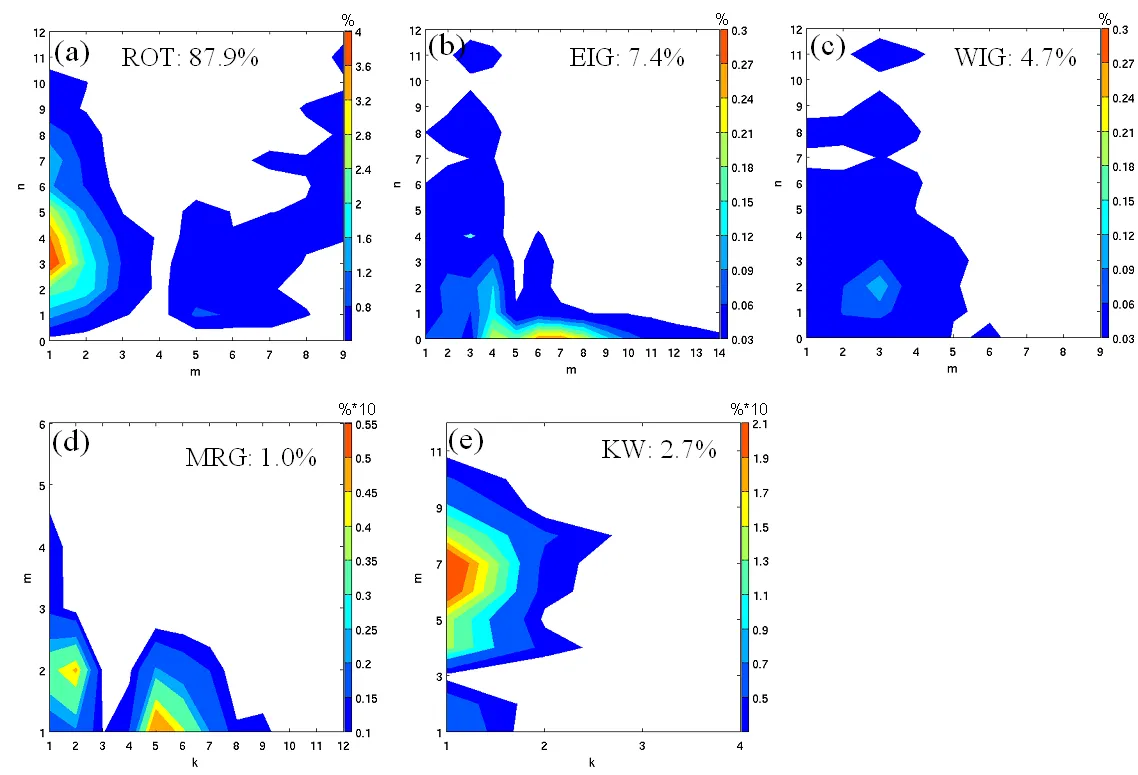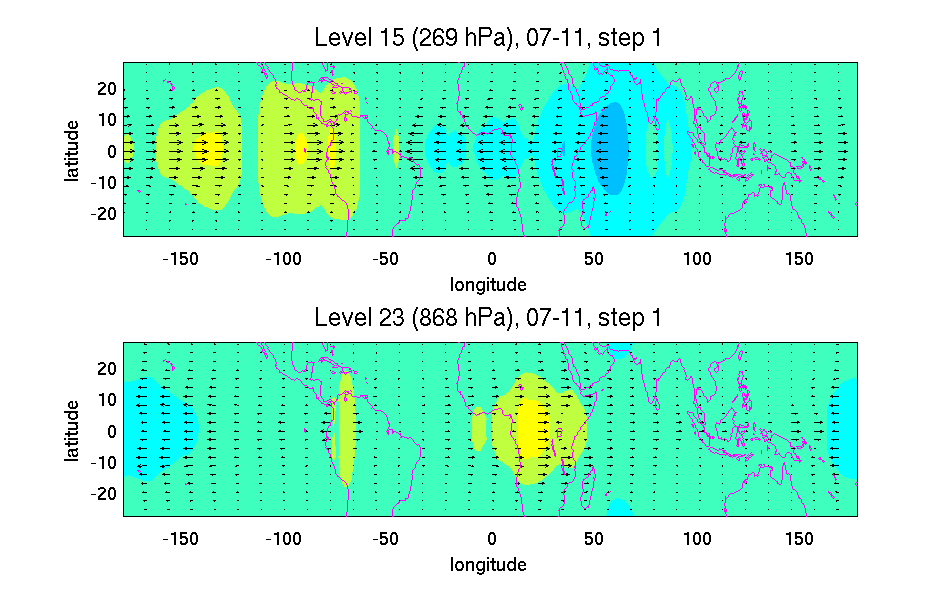Inertio Gravity Waves
This project aims at quantifying the impact of various motion types in analysis and forecast fields by using normal modes. The DART/CAM is the main analysis system used in the project. The first question addressed is about how large part of the atmospheric energy is associated with the inertio-gravity motions, an important part of the global circulation primarily because of
their role in the tropical system.
Nedjeljka Zagar, nedjeljka.zagar@uni-hamburg.de
The methodology is based on the three-dimensional normal-mode function (NMF) expansion. The representation of field in terms of NMFs enables both quantification of energy in each mode (defined by the zonal wave number k, meridional mode n and vertical eigenstructure m) and the representation of motions in terms of the balanced (ROT) and the inertio-gravity (IG) contributions.

The figure above presents the energy distribution among various motion types in DART/CAM analyses for July 2007. It shows that about 88% of the wave energy is in the balanced (ROT) motion and about 12% in the eastward- and westward-propagating (EIG and WIG, respectively) IG motions. About 1% of the wave energy in this system in July 2007 was associated with the mixed Rossby-gravity (MRG) waves and about 2.7% with the Kelvin wave (KW) motion, which is the most energetic among all IG waves.
The time evolution of the Kelvin wave at two model levels in the DART/CAM anayses between 6 and 31 July 2007 can be observed in the animation below.

This result shows that the vertical structure of the “real” Kelvin wave agrees with the representation of this wave employed in the simple models for the tropics, with the wind and geopotential perturbations having opposite signs in the lower and the upper troposphere.
The normal-mode expansion is also employed to study the dynamics of the short-range forecast errors, an important issue for the data assimilation modeling. Questions asked are about the characteristic structures of the forecast errors in time and space. By comparing the error structures in the NMF space a relative contributions of the balanced and unbalanced modes to the error fields can be quantified. Another application of the NMFs is the diagnosis of the systematic tendencies of the analysis systems to place the observations into specific motions, usually identified as the analysis system bias.
Select publications:
Zagar, N., J. Tribbia, J. L. Anderson, K. Raeder and D. T. Kleist, 2010 Diagnosis of systematic analysis increments by using normal modes. Quarterly Journal of the Royal Meteorological Society, 136, 61-76, doi:10.1002/qj.533
Zagar, N., J. Tribbia, J. L. Anderson, K. Raeder, 2009 Uncertainties of estimates of inertia-gravity energy in the atmosphere. Part I: Intercomparison of four analysis systems Monthly Weather Review, 137, 3837-3857, doi:10.1175/2009MWR2815.1
Zagar, N., J. Tribbia, J. L. Anderson and K. Raeder, 2009 Uncertainties of estimates of inertia-gravity energy in the atmosphere. Part II: Large-scale equatorial waves. Monthly Weather Review, 137, 3858-3873, doi:10.1175/2009MWR2816.1